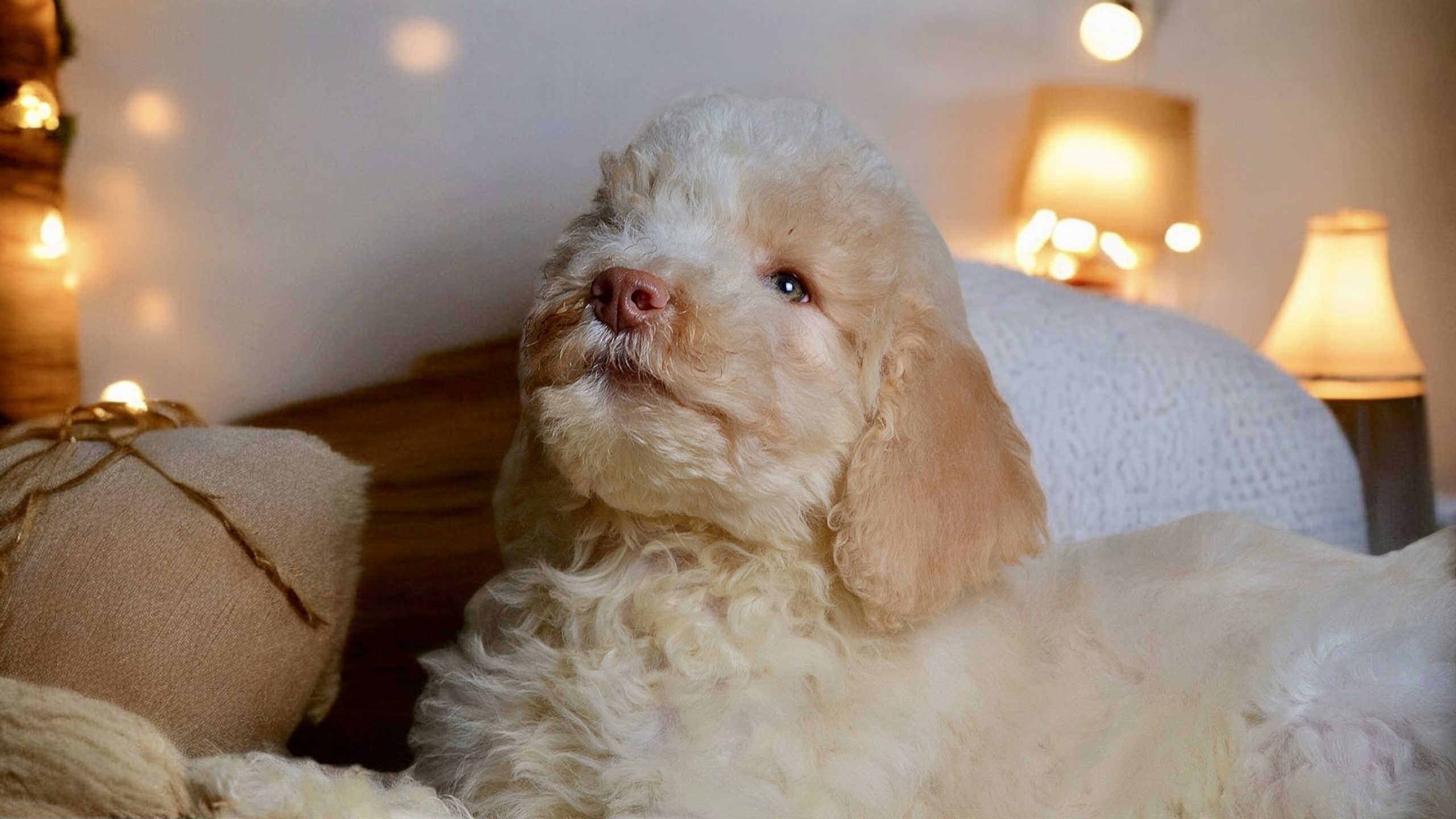Which patterns and color variations exist in standard poodle breed?
When it comes to giant poodles, their color and patterns are very diverse. Giant poodles can be either solid in color or feature striking multicolor patterns. These include both particolor giant poodles and multicolor giant poodles, which offer a unique visual appeal. Within the multicolor category, there are two main distinctions: abstract and particolor patterns.
In an abstract pattern, the “colored” part of the giant poodle is more dominant than the white part. However, in a particolor giant poodle, the white part is more prominent. Despite these distinctions, many owners and breeders don’t differentiate between abstract and particolor patterns, referring to all multicolored poodles as particolor giant poodles.
The history of particolor in giant poodles
Particolor giant poodles first appeared in America, and they remain more common in the U.S. than in Europe. In European countries, black-and-white particolor giant poodles are often mistakenly called harlequin poodles. However, the harlequin gene is absent in poodles. The harlequin gene, found in other breeds, is linked to the merle gene, which is also absent in purebred poodles.
It is speculated that at some point, herding dogs carrying the merle gene might have been introduced into the poodle bloodline, resulting in what some have called merle poodles, but these dogs are not recognized as purebred. Genetics researchers agree that the merle gene is not present in poodles.
Color variations in giant poodles
Standard poodles alike can exhibit a wide range of color variations. Essentially, all poodles are genetically based in either black or brown, and this base color can be modified by various genes that result in shades like silver, blue, red, or even silver beige. These genes interact in complex ways, and the final color visible on a giant poodle also known as the standard poodle depends on which genes are dominant at specific loci.
The fading colors of standard poodles
One fascinating aspect of giant poodle genetics is the potential for their colors to fade over time. Some genes at certain loci cause the color to lighten as the dog matures, sometimes over the course of 1-2 years. While some consider this fading a defect, it is a natural genetic occurrence. If a particolor giant poodle or multicolor giant poodle has parents that carry the fading gene, breeders can predict which puppies may experience this fading.
The beauty of giant poodles, especially particolor giant poodles and multicolor giant poodles, lies in their wide range of colors and patterns. Understanding their genetic makeup, whether solid or multicolor, ensures breeders and owners can fully appreciate the complexity and uniqueness of this magnificent breed.

